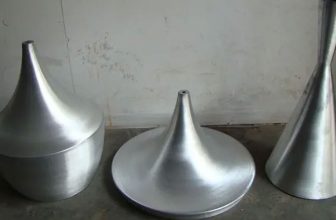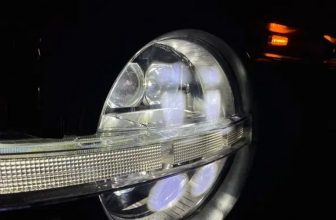The use of high-power LED lighting equipment is increasing day by day. The luminous brightness of high-power LED is actually proportional to its current. At the same time, the forward current of high-power LED changes with temperature. Introduce the cause of LED junction temperature and the heat dissipation method of LED semiconductor lighting source.
#1 Introduction
In the past decades of development, the luminous efficiency of LED has been continuously improved, while the cost has been continuously reduced, and the colors have become richer. This makes high-power LEDs, as a high-efficiency, energy-saving, environmentally friendly, and safe clean light source, likely to replace other lighting sources in the near future. However, the heat dissipation problem of high-power LED lamps is still a major development bottleneck in its application in the lighting field, and it is an important reason restricting its development into a new generation of lighting sources.
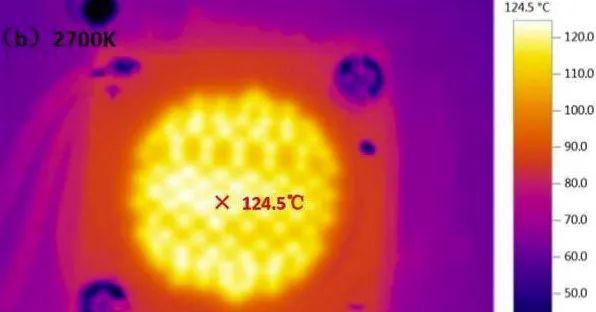
According to research data, assuming that the luminescence of the LED chip is 100% when the junction temperature is 25°C, then when the junction temperature rises to 60°C, its luminescence is only 90%; when the junction temperature reaches 100°C, it will drop to 80%. ; 140 ℃ is only 70%. It can be seen that improving heat dissipation and controlling junction temperature is very important for improving its luminous efficiency. If the heat dissipation problem of high-power LED lamps is not solved properly, the working temperature and junction temperature of LED lamps will increase, which will lead to the shift of LED chromaticity point, the decrease of color rendering index, the increase of color temperature, the decrease of luminous efficiency and the shortening of service life .
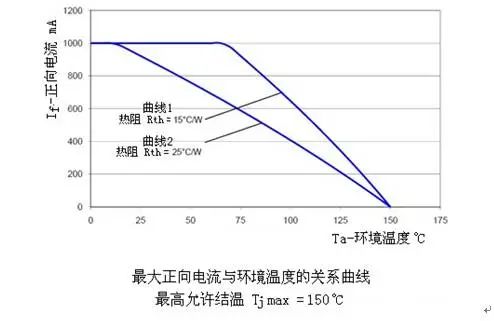
The luminous brightness of a high-power LED is actually proportional to its current. If the output luminous flux of a high-power LED is controlled, it is equivalent to controlling its luminous brightness. The forward current of high-power LED will also change with the change of temperature. When the ambient temperature exceeds a certain value (we call it safe temperature), the forward current through LED will suddenly decrease, and at this time if the current continues If it is increased, the life of the LED will be reduced.
Therefore, at this time, corresponding measures must be taken to regulate the forward current of high-power LEDs in a timely manner when the input current of the bulb lamp changes with factors such as the surrounding temperature. The utility model dynamically adjusts the output current according to the ambient temperature through temperature compensation, and monitors the LED temperature in real time, so that the current of the high-power LED is automatically reduced when the high-power LED is in a high-temperature state, and the method makes the high-power LED lamp safer.
#2 Current Status Of High-Power LED Lighting Products
The “chip-aluminum substrate-radiator three-layer structure model” is adopted by most high-power LED lighting fixtures on the market, that is, the chip is first packaged on the aluminum substrate to form an LED light source module, and then the light source module is installed on the radiator , so that it can be manufactured into high-power LED lighting fixtures. At present, the way LEDs are used to display lamps and indicator lights in the early days is still used as a thermal management system for high-power LEDs. This thermal management mode is limited to low-power LEDs. The high-power LED lighting prepared by the three-layer structure mode still has many unreasonable places in the system structure, such as high junction temperature between structures, relatively low heat dissipation efficiency, and more contact thermal resistance. , so that the heat released by the chip cannot be effectively dissipated and exported, resulting in large light decay, low light efficiency, and short life of LED lighting fixtures, which cannot meet the lighting needs.
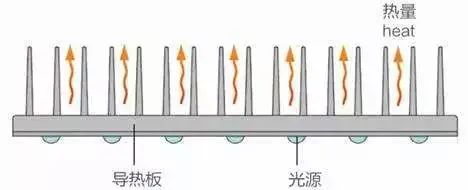
Due to the limitations of many factors such as structure, cost and power consumption, it is difficult for high-power LED lighting to adopt an active heat dissipation mechanism, but only a passive heat dissipation mechanism, but passive heat dissipation has great limitations; and the current energy conversion efficiency of LEDs is still Not high, about 70% of the input electric energy is converted into heat, even if the light efficiency is doubled, 40% of the energy is converted into heat, that is to say, it is difficult to increase to the extent that heat dissipation is not considered.
#3 The Characteristics Of LED Lighting Source
Different from conventional fluorescent lamps, incandescent lamps and halogen lamps, LED semiconductor lighting sources are based on semiconductor materials and are composed of a PN structure. The electron-hole pairs are recombined to generate visible light. The PN junction is forward-conducting and reverse-blocking. The negative pole, the P area corresponds to the positive pole. LED semiconductor light source has the advantages of high luminous efficiency, short response time, small size and energy saving. In addition, it also has characteristics that traditional lighting sources do not have:
1. It has characteristics similar to general PN junction semiconductor devices:
- Both the forward current and the forward voltage have negative temperature coefficients, which decrease as the temperature rises;
- The forward voltage must exceed a certain threshold to generate current;
- When reversed, it will not work without current.
2. There are many aspects that restrict its working temperature, as follows:
- The brightness of the LED has a certain curve relationship with the forward current. When the junction temperature exceeds a certain value, the brightness decreases with the decrease of the forward current;
- The junction temperature must be limited below the rated value of 95°C to 125°C;
- If the surface contains plastic lenses, it will be limited by the melting point temperature of the lens material.
#4 Introduction To LED Junction Temperature
1. The cause of LED junction temperature
A large part of the reason for the heat generation of LEDs is that not all of the added electrical energy is converted into light energy, and part of it is converted into heat energy. The luminous efficiency of LEDs currently on the market is about 100 lm/W, and its electro-optical conversion efficiency is still very low, only about 20-30%. That is to say, about 70% of the electric energy is wasted in the form of heat energy.
Generally speaking, there are two factors that lead to the generation of LED junction temperature. details as follows:
(1) Internal quantum efficiency.
When holes and electrons recombine, not all photons are generated. This is usually called “current leakage”, which is the reason for reducing the recombination rate of carriers in the PN region. The product of the leaked voltage and current is this part of the dissipated power, which is converted into heat energy, but this part is not the main component, because the current technology can make the internal photon efficiency of LED close to 90%.
(2) Only about 30% external quantum efficiency.
One of the main reasons is that the photons generated by the recombination of carriers cannot be completely emitted to the outside of the chip but converted into heat. Although the incandescent lamp only has a luminous effect of about 15lm/W, it radiates electrical energy in the form of light energy. Although most of the radiant energy is infrared, the luminous efficiency is very low, but this avoids the problem of heat dissipation. . The problem of LED heat dissipation has gradually become a research hotspot. The reason is that the LED life or light decay is directly related to its junction temperature. If the heat dissipation problem is not handled properly, it will directly cause the junction temperature to be too high and the lifespan to be reduced.
2. The method to reduce the LED junction temperature
- Control the rated input power;
- Well-designed secondary heat dissipation structure;
- Minimize the thermal resistance between the secondary heat dissipation structure and the LED installation interface;
- Reduce the ambient temperature;
- Reduce the thermal resistance of the LED itself.
#5 The Heat Dissipation Method Of LED Semiconductor Lighting Source
Generally speaking, radiators can be divided into passive cooling and active cooling according to the way heat is taken away. The so-called passive heat dissipation means that the heat generated by the heat source LED light source is naturally dissipated into the air through the heat sink. The heat dissipation effect is proportional to the size of the heat sink. However, this heat dissipation effect is not ideal, and it is most commonly used in low-condition Most of the equipment used for heat dissipation of low-power and low-calorie devices adopt active heat dissipation. Active heat dissipation means that some devices actively take heat away from the heat sink. These devices have fans and so on. High heat dissipation efficiency is the main feature of active heat dissipation and it has a relatively small volume.
Another way is to use “vertical” electrodes to manufacture LED components, because the upper and lower ends of the LED components are equipped with metal electrodes, which can greatly help the heat dissipation problem. Taking the GaN substrate as an example, because the GaN substrate is a conductive material, the electrodes can be directly fabricated and connected under the substrate, which can obtain the benefits of rapidly dissipating the epitaxy temperature. However, due to the high cost of materials, this method will also be more expensive than the traditional method of sapphire substrate. The cost is much higher, which will increase the production cost of components.





